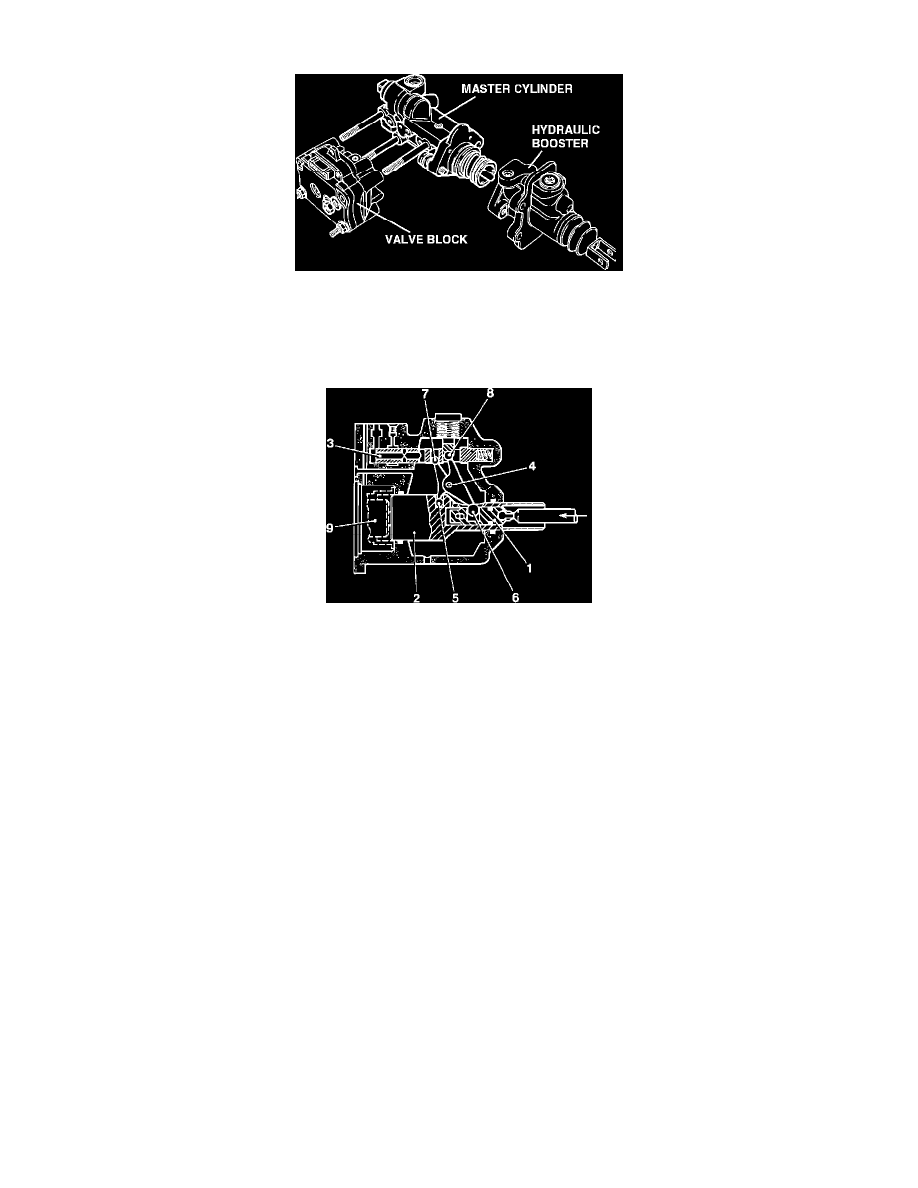Majestic L6-4.0L (1990)

Hydraulic Brake Booster: Description and Operation
ABS Brake Master Cylinder
HYDRAULIC BRAKE BOOSTER
One important aspect of the ABS is the hydraulic booster which boosts the pedal force by means of hydraulic pressure. The dynamic circuit of the
rear brakes is supplied from the hydraulic accumulator via a control valve in the booster.
Hydraulic Booster
The pressure in the booster and the rear brake circuit is proportional to the pedal force. Low pedal force = low pressure; High pedal force = high
pressure. The booster is composed of an actuating piston (1) and a booster piston (2). The movable, mechanical connection between the control valve
(3) and the two pistons is made by means of a scissor-lever mechanism (4).
The control valve (3) opens the pressureless booster chamber to the reservoir (9). At the same time, the channel from the hydraulic accumulator is
closed. The accumulator is constantly maintained in an operating pressure range between 140 to 180 bar. As force is applied to the brake pedal, the
actuating piston (1), with the scissor (4), moves forward. The two lower articulated balls (5 & 6) move towards one another while the upper balls (7 &
8) move apart. Due to this movement, the control valve (3) opens the intake channel from the accumulator just after it closes the return flow.
In the brake booster, a pressure is built up which is transmitted to the rear brakes and is also acting simultaneously on the booster piston (2), boosting
the actuating force on the master cylinder piston. At the same time the pressure acts between the booster piston (2) and the actuating piston (1)
separating the two parts. The lower articulated balls (5 & 6) move apart while the upper balls move towards one another, this movement closes the
intake by means of the control valve; the return flow remains closed.
The control valve (3) is closed when the pressure acting on the actuating plate (1) causes a force which is equal to the preset pedal force; when there is
a balance of forces. The pressure acting on the annular circle of the booster piston (2) increases the pedal force. The pedal force is increased in the
ratio 1 : 4. The booster ratio depends on the ratio of actuating piston area (1) to booster piston area (2). The pressure in the booster is proportional to
the pedal force.
In maximum braking position, the control valve is open completely, the entire accumulator pressure of 180 bar acts on the booster piston. The
maximum possible brake boosting is utilized. The brake pressure to the front wheel brakes can only be increased when the pedal force is increased.
The brake pressure in rear wheel brakes cannot exceed 180 bar even in the case of the pedal force increase.
